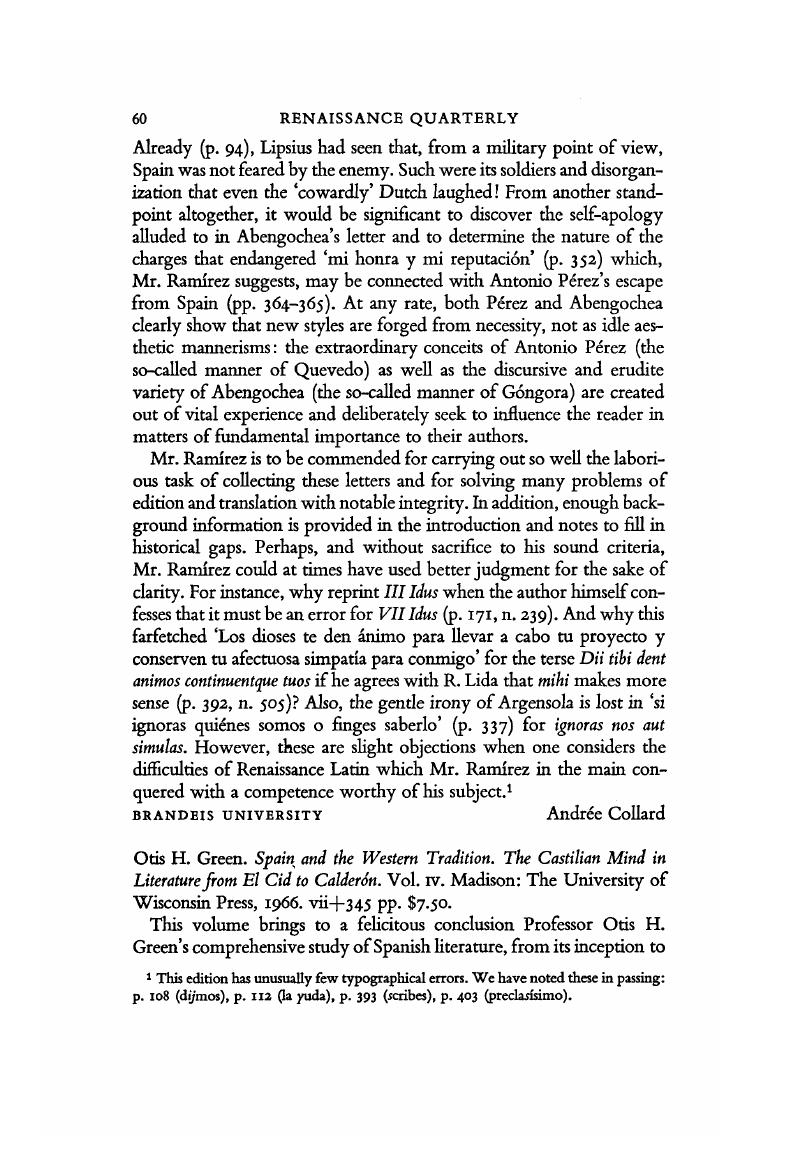No CrossRef data available.
Published online by Cambridge University Press: 20 November 2018

1 On the widespread preoccupation with time and its significance, see Brandon, S. G. F., 'Time as God and Devil,’ Bulletin of the John Rylands Library, XLVII (1964), 12–31.CrossRefGoogle Scholar
2 It manifests itself also In Gracián's treatment of the superior man. See Hafter, Monroe Z., Gracián and Perfection. Spanish Moralists of the Seventeenth Century (Cambridge, Mass., 1966), pp. 100–120.CrossRefGoogle Scholar
3 Perhaps even more useful for Professor Green's purpose is Fr. Heitor Pinto's Diálogo da lembranca da morte, where the friar discourses on four kinds of death. See his Imagem da vida cristā (Coimbra, 1563; I refer to a later edition, Lisboa, 1681), pp. 203-242.
4 Green cites as an example Fr. Diego Velades (1579), who stated that the ‘ … plain and simple truth has no need of artificial colors or strange lights …’ (p. 194). That these views did not prevail may be inferred from the publication of works such as Francisco Ignacio de Porres’ Escuela de discvrsos. Formada de sermones varios, escritos por diferentes autores, maestros grandes de la predication (Lisboa, 1649) and Ameyugo's, Francisco de Rethorica sagrada, y evangelica. Illvstrada con la practica de diversos artificios rethoricos, para proponer la palabra divina (Zaragoça, 1667).Google Scholar
5 See the Imagem, p. 155. In the anonymous Spanish translation Imagen de la vida christiana (Çaragoça, 1571), fol. 188v, the passage reads:'… este Simila embuelto en las ondas inquietas de la coite Romana … cayo en la cuenta de si, y vio que no se veya … .'
6 Salamanca, 1554; I refer to a later edition, Valladolid, 1615, p. 59. Cf. also Pinto's Imagem, fol. 9.
7 See the critical edition of Miguel Romera-Navarro and Jorge M. Furt (Buenos Aires, 1960), p. 233: ‘La misma filosofía no es otro que meditación de la muerte … .'
8 See Plato, Phaedo, 67 D.
9 See Tusculanae disputationes, 1, xxx, 74: ‘Tota enim philosophorum v i t a … commentatio mortis est.'
10 See, for example, Saint Jerome, Epistola LX. Ad Heliodorum, PL XXII, col. 598: ‘Platonis (In Phaedone) sententia est, Omnem sapientium vitam, meditationem esse mortis.'